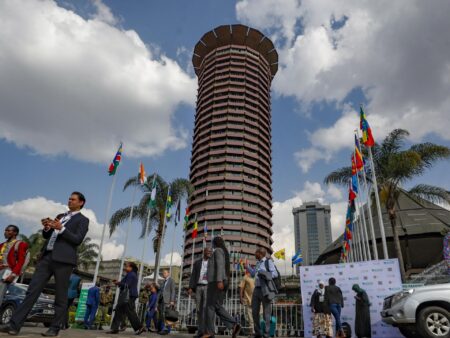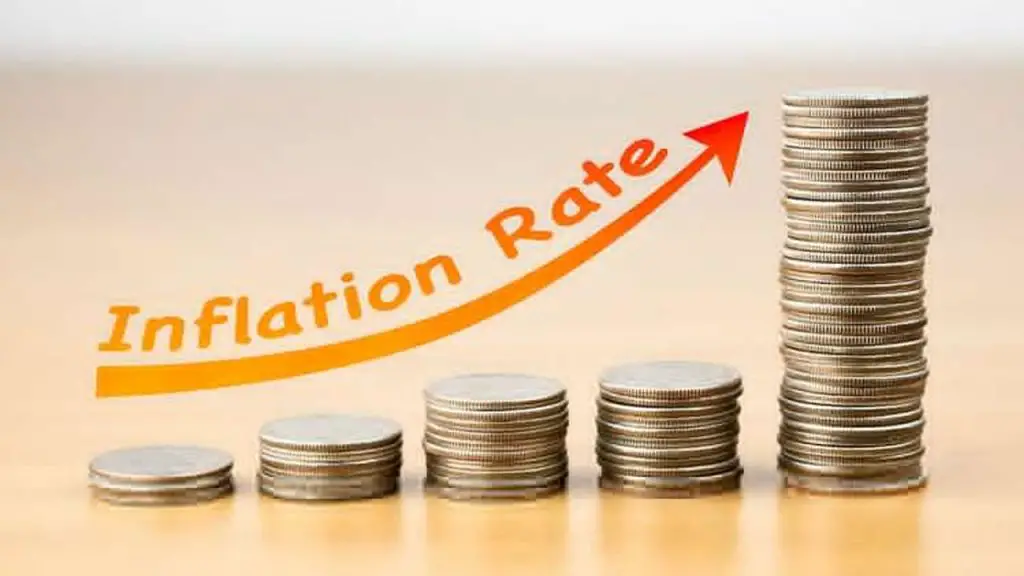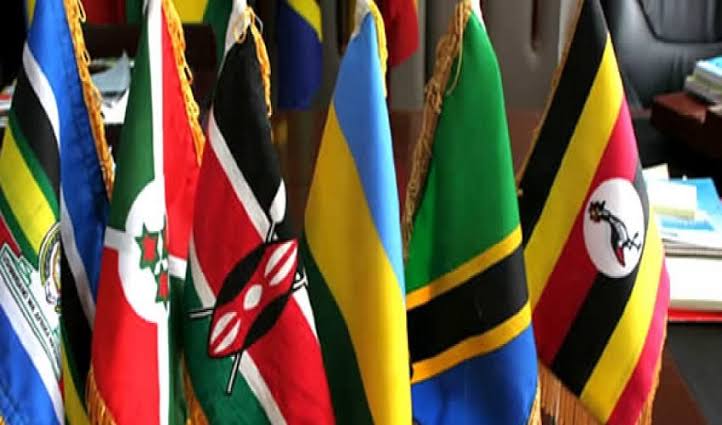- Africa’s new dawn: the rising role of digital and AI in agriculture
- Can Dangote Refinery Transform Africa Energy Ambition
- Gallup Survey: 80 per cent of Kenyan Workers Are Disengaged and Seek New Opportunities
- Madagascar Man Freed from 5KG Tumor After 15-Year Struggle
- How women in Africa are perceived and treated
- Sugar consumption in Kenya to Increase to 1.23 Million Tonnes
- Can Somalia and Turkey Oil deal Bring Change in Somaliland
- Remittances to Kenya dropped to $371.6 million in June, marking a six month low
Browsing: cost of living
- The protests, dubbed “occupy parliament,” were coordinated and mobilised on social media in contrast to those led and sponsored by politicians.
- Many were demonstrating for the first time and waved signs such as “Do Not Force the Taxes on Us,” while others chanted: “Ruto must go.”
- Unlike previous political anti-government protests, these demonstrations are not characterised by looting, destruction of property, or stone-throwing.
Social media as a weapon
A bold new generation of young Kenyan protesters has emerged on the streets, forcing the government to back down on several unpopular tax proposals.
What started as anger on TikTok about a controversial finance bill has morphed into a revolt without being organised by political parties.
The government of President William Ruto has managed to do what generations of politicians in the East African nation still need to do unite huge numbers of Kenyans beyond ethnicity and party.
On 18th June 2024, …
- The rising fed rates have led to expensive loans as Kenya struggles to curb inflation
- Although global inflation has generally eased, rapid monetary policy tightening in advanced economies has sharply tightened global financial conditions.
- According to the CBK governor, Kenya should brace for a challenging 2024, including tightening global conditions that will cascade to local levels
Kenya is still at risk of bearing the impacts of new global threats like rising fed rates that may emerge in 2024, financial industry sector players have revealed.
In the past year, the country has confronted challenges ranging from the war in Ukraine, the prolonged drought that affected the country, rising federal rates, and high global inflation.
The rising fed rates led to expensive loans as the country struggled to curb inflation, which currently stands at 6.9 per cent.
Financial experts from Standard Chartered project that the rising fed rates will ease from mid …
- With the cost of living ranking done in terms of countries’ major cities, Kenya’s Nairobi has been ranked position 141 out of 173 cities surveyed globally.
- For the ninth time in the previous eleven years, Singapore continued to hold the top spot in the rankings as the most expensive city in the world.
- Kenya’s inflation for the month of December slightly eased to 6.6 percent, down from 6.8 percent in November.
Kenya’s ranking in the cost of living improved in 2023, a result of the country’s decreased cost of living in the 12 months leading up to September, as indicated in the latest report from the International Research Unit, Economic Intelligence.
During this period, Kenya fell 33 places in the rankings of countries surveyed on the world’s cost of living, with Nairobi securing the 141st position out of 173 cities surveyed globally.
According to Economic Intelligence, this suggests that the …
For many Kenyans, life was unbearable during former President Uhuru Kenyatta’s reign. But just one year after President William Ruto came to power, life is getting more onerous. High taxation, the depreciation of the shilling against the dollar, and record-high fuel prices have highlighted the last few months. This has painted a grim picture of Kenya’s future and shattered citizens’ hopes for economic reinvigoration.
On September 14, 2023, the Energy and Petroleum Regulatory Authority (EPRA) announced record-high fuel prices for the September-October regulation cycle. A litre of super will now retail at Kes 211.64, diesel at Kes 200.90, and Kerosene at Kes 202.61. This represents an increase of Kes 16.96, 21.32, and 33.13, respectively, in the new prices announced last midnight.…
This year’s progress has been threatened by Russia’s invasion of Ukraine, which has caused a global economic shock that has hit Africa at a time when the government’s policy space to respond to it is small to nonexistent.…
The cost of living in East Africa has risen with the governments shifting the debt repayment burden to businesses and households by increasing taxes.
According to data from the national bureaus of statistics, in countries such as Rwanda, Uganda, Kenya and Tanzania, an increase in fuel prices as well as weaker local currencies has also contributed to the prices of essential commodities like milk, bread, groceries, oil and fruits.
According to the Bank of Tanzania (BOT), Monetary Policy Statement released early this year, inflation in 2020 was estimated at 5.2 per cent in the East African region which was within EAC convergence criteria of not more than eight percent but higher than 3.2 per cent in 2019.
In March, Uganda posted an increase in the overall monthly inflation which rose to 4.1 per cent from 4.1 per cent in February while Kenya also recorded an increase of 5.9 per cent …
The Mercer 2020 gives the cost of living in African cities giving the most expensive and least expensive cities to live in Africa in its Cost of living survey.
The annual survey ranks cities cost of living based on the prices of goods and services such as rent, food and clothing.
The survey is mostly used by multinational organisations to set remuneration packages for their foreign-based employees.
“The Covid-19 pandemic reminds us that sending and keeping employees on international assignments is a huge responsibility and a difficult task to manage,” said Ilya Bonic, career president and head of Mercer Strategy.
According to the report, in East Africa, Kampala Uganda is the least expensive city to live in while Nairobi Kenya is the most expensive city, Kigali Rwanda takes the second least-expensive city followed by Dar-es-Salaam Tanzania.
Also Read: Cost of living to go up for EAC
The report sampled 40 …
As African nations’ economies grow, so do individual expenses in basic and often, extra necessities, such as food, clothing, rent, data, and entertainment to say the least.
In this case, there are a lot of benefits attached when people tweak their expenses strategically and hone the art of saving, especially on their consumables spending habits when living in big cities, such as Tanzania’s commercial capital, Dar es Salaam (Africa’s fifth-largest city).
Tanzania is one of the fastest-growing economies in sub-Saharan Africa, and Dar es Salaam (with more than six million people) is one of the 30 cities in the world growing fast, according to National Geographic.
Expatistan, a cost of living database, noted that Dar es Salaam has cheaper costs of living than in 62 per cent of cities in Africa and in 83 per cent of cities around the world.
As we accumulate savings over time, the nagging worries …
East Africans should brace themselves for an increase in the cost of living as households and businesses pay more for goods and services.
Regional currencies are facing increased pressure against the dollar as increasing debt levels and increased servicing obligations threaten to wear down foreign exchange reserves, market data shows.
The projected drop of regional currencies is mainly attributed to the growing debt servicing obligations for foreign currency-denominated debts. To pay off external creditors, it requires a drawdown of the country’s foreign reserves.
According to analysts at AIB Capital, as a pick-up in consumer demand increases imports, the Kenya shilling is expected to further depreciate against the dollar. The country’s exports are likely to remain relatively uncompetitive therefore, this will lead to an increase in the current account deficit.
“We expect the shilling to gradually depreciate against the dollar but remain relatively unchanged against the euro and pound,” said AIB.…













